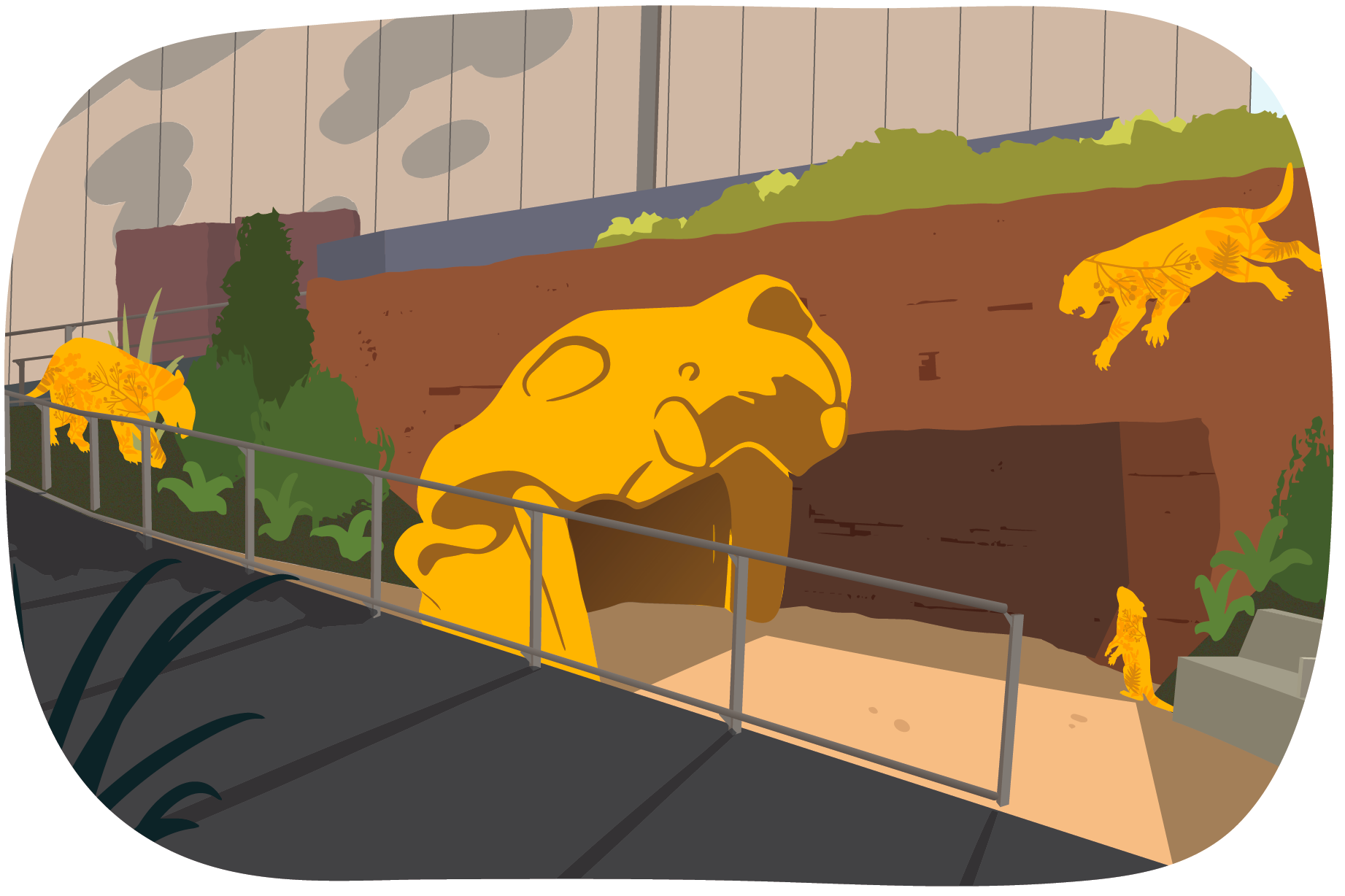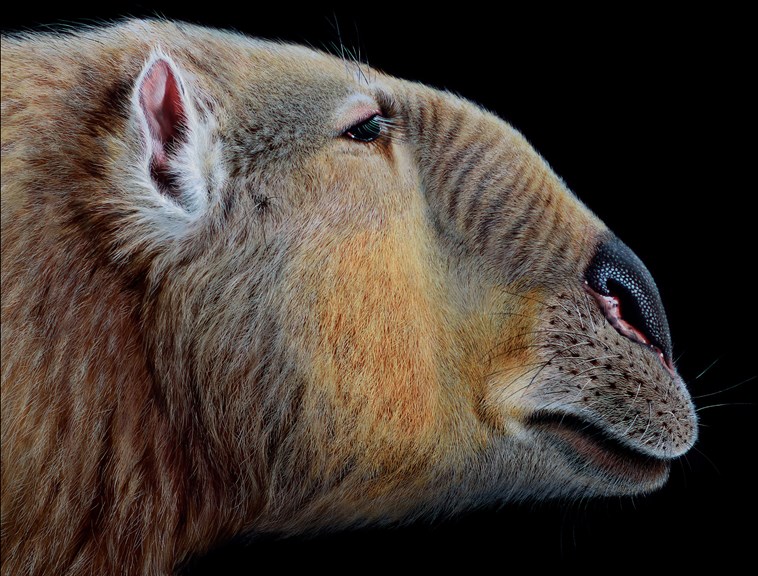Marsupial lion
Thylacoleo is the largest meat-eating marsupial ever to have lived.
Explore the skull of Thylacoleo to find out more about the ‘marsupial lion’.
Thylacoleo
The fossils and claw marks in this cave tell us a lot about who lived there. We have adult and joey Thylacoleo fossil bones alongside the bones of prey species. We can tell that this is not just a place where bones have washed up, it is a den – the home of Thylacoleo preserved in the landscape.
Palorchestes arm fossil
By studying the fossilised arm bones of Palorchestes scientists have been able to learn an impressive amount about the animal. It must have walked in a crouched position with its limbs sprawled to the sides. Palorchestes probably lived in forest and may have used its specialised forelimbs to tear apart ferns and logs.
Finding fossils
Caves on Gunaikurnai Country at Buchan, East Gippsland, still hold the remains of Thylacoleo, Palorchestes, and other extinct megafauna from this period.
Museums Victoria scientific teams are surveying caves at Buchan for fossils preserved underground.
How much did Palorchestes weigh?
Palorchestes was a huge, muscular herbivore. Although fossil evidence of Palorchestes is very rare, some of the most useful fossils have been discovered in Victoria. Using these, scientists have estimated that the largest species of Palorchestes grew to more than 1000kg!










